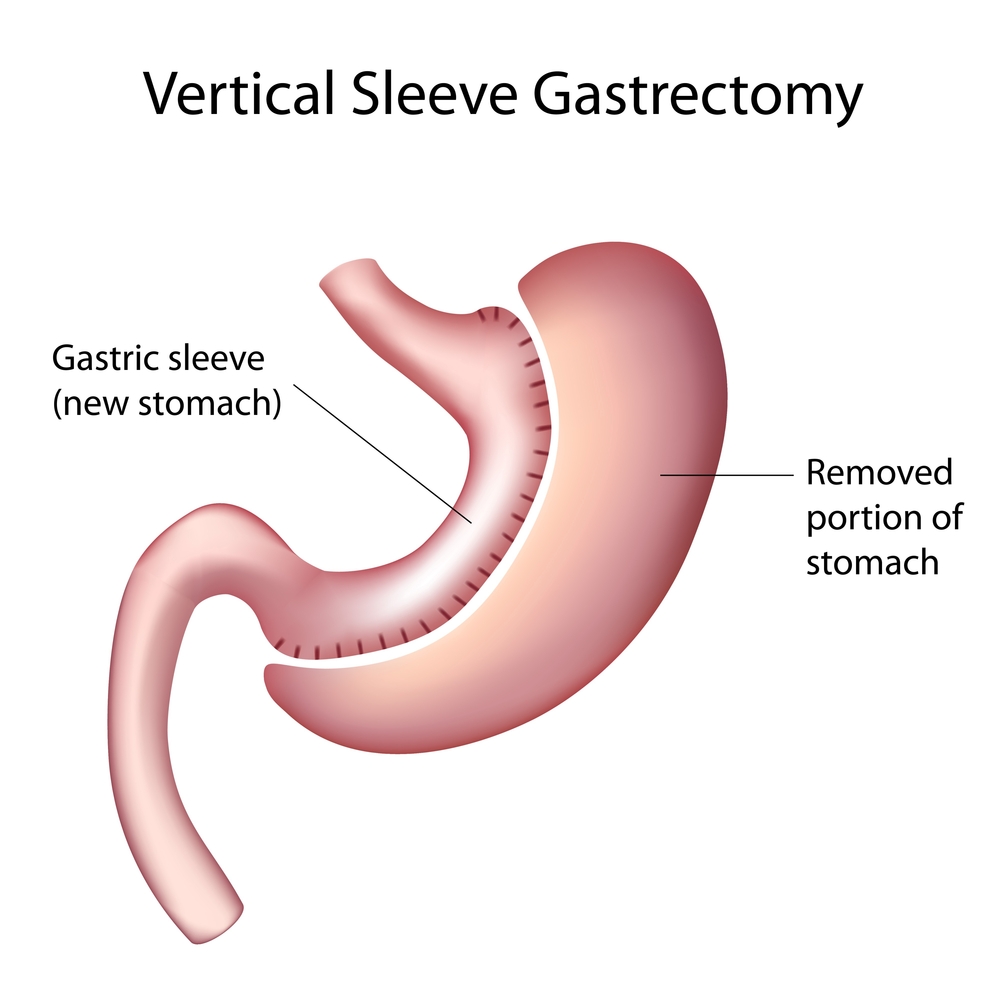Sleeve Gastrectomy
 The vertical sleeve gastrectomy, also known as the sleeve gastrectomy or gastric sleeve, restricts the amount of food you eat by reducing the size of the stomach. The minimally invasive procedure removes a portion of the stomach, making the stomach roughly the size and shape of a banana.
The vertical sleeve gastrectomy, also known as the sleeve gastrectomy or gastric sleeve, restricts the amount of food you eat by reducing the size of the stomach. The minimally invasive procedure removes a portion of the stomach, making the stomach roughly the size and shape of a banana.
Patients who have a sleeve gastrectomy feel full after eating much less. In addition, removing a portion of the stomach reduces the body’s level of a hormone called ghrelin, which is commonly referred to as the “hunger hormone.” Thus, many people find that they are much less hungry after the sleeve gastrectomy. Ghrelin also plays a role in blood sugar metabolism, so people with type II diabetes often see an immediate decrease in their need for diabetes medications (especially oral medications) after the sleeve gastrectomy.
This procedure can be an excellent alternative to gastric bypass or gastric banding; there is no foreign body implanted, as with the adjustable gastric band, and there is no complex intestinal rearrangement, as with the gastric bypass.
Most patients find that after a reasonable recovery, that they are able to comfortably eat a wide variety of foods, including meats and fibrous vegetables. Unlike the adjustable gastric band and the gastric bypass, the sleeve gastrectomy is a permanent procedure – it cannot be reversed.
Our team will help you determine whether sleeve gastrectomy is appropriate for you and exactly how it will be performed. In some cases, the sleeve gastrectomy is performed as a single weight-loss procedure, often for patients who prefer not to have a gastric band implanted or who have conditions, such as anemia, that prevent other surgical options. In other instances, the sleeve gastrectomy is performed as part of a two-step process in extremely obese patients (generally, those with a BMI over 60) after which another.
Advantages of Sleeve Gastrectomy:
Fewer food intolerances than with gastric banding.
Weight loss generally is faster with the sleeve than with gastric banding.
There is no implantable band device, so slippage and erosion are not a risk.
The surgical risk is lower than with gastric bypass procedures, but the weight loss is similar. In addition, we perform the sleeve gastrectomy using minimally invasive techniques that help speed recovery time.
No device that needs adjustment is inserted, so the follow-up regimen is not as intense as it is with gastric banding.
Disadvantages of Sleeve Gastrectomy:
Sleeve gastrectomy is not adjustable or reversible.
GERD in 10% of cases
Risks/Complications:
Standard risks associated with surgery
Leakage at the suture site (less than 0.1% in our series)
Recovery Timeline:
Hospital stay averages 24 – 48 hours
Most patients return to normal activity within two weeks
Full surgical recovery usually occurs within three weeks

